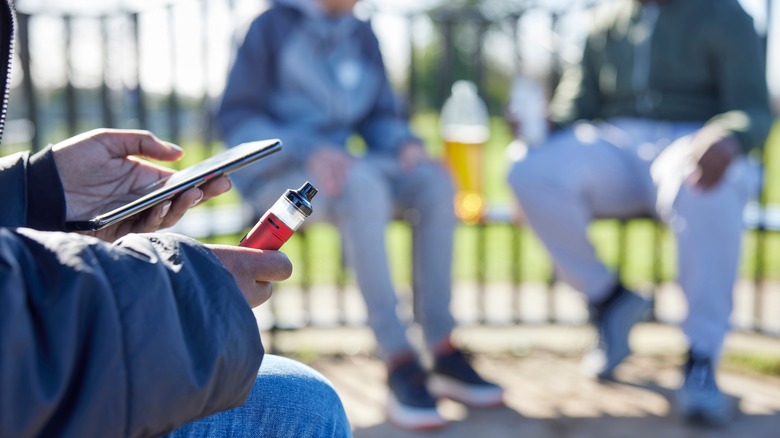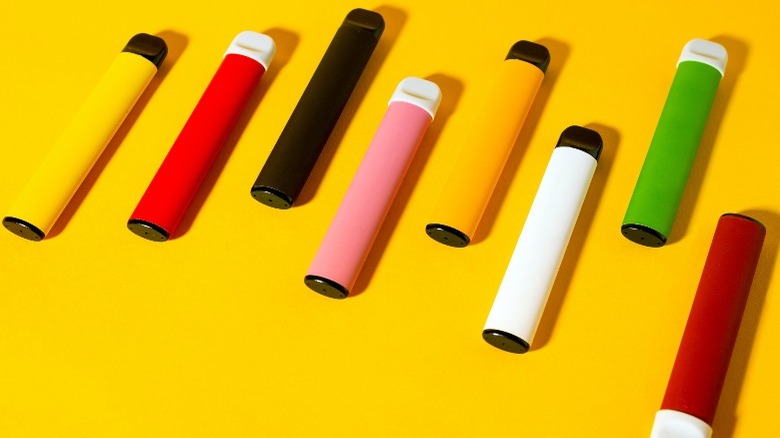This Popular Kind Of Tobacco Product Is More Likely To Tempt Kids To Use Tobacco
According to the National Institute on Drug Abuse, tobacco is a natural plant that contains the addictive chemical nicotine. Once dried and fermented, tobacco leaves are processed into many different forms of products. For example, tobacco comes in smokeless forms like chewing tobacco, snus, and snuff (via Michigan Health and Human Services). There are also smokable forms like cigarettes, cigars, hookah, and the related vapable kinds of products like e-cigarettes that also deliver nicotine. Tobacco use has a wide range of potentially dangerous health risks like blood clots, coronary artery disease, some cancers, and poor skin health. It can even prevent the healing of wounds after surgery, reports MedlinePlus.
Despite these dangers, people continue to use tobacco products, even children. In fact, the Centers for Disease Control and Prevention (CDC) estimates that over 2.5 million middle and high school students reported using tobacco within the last 30 days. Further, the CDC warns that tobacco companies use advertising and marketing tactics that may promote youth tobacco use. But when it comes to kids and tobacco use, not all tobacco is viewed the same. Here's everything you need to know about a popular type of tobacco product that may be tempting kids to use tobacco.
Dangers of flavored tobacco products
In 2015, the Centers for Disease Control and Prevention (CDC) warned that the majority of kids who use tobacco products were using flavored products (via NBC News). With flavors that mimic some of kids' favorite products — like candy, chocolate, and fruit — the temptation to use flavored tobacco products may be greater for kids than the unflavored ones. Today, the CDC reports that the percentage of kids who use flavored tobacco products has increased from 70% to 79.1%. A 2021 CDC report concluded that flavored tobacco not only disguises the harshness of tobacco, but also increases the likelihood of continued tobacco use for first-time users. You might wonder: If flavored tobacco products were taken off the shelves, would kids still continue to use unflavored tobacco products at the same rates?
A 2022 study published in the British Medical Journal Tobacco Control reviewed data on smoking and vaping in Oakland, California youth from 2017-2019. Notably, in 2018 a restriction on the sale of flavored tobacco products took effect in Oakland (via East Bay Times). It limited the sale of flavored tobacco products to stores that make 60% or more of their business from tobacco products. The researchers of the aforementioned study found that cigarette and vape use in high school kids dropped after the restriction took effect. In a recent press release, the researchers concluded that banning flavored tobacco products may reduce youth tobacco use (per University of Pennsylvania).


